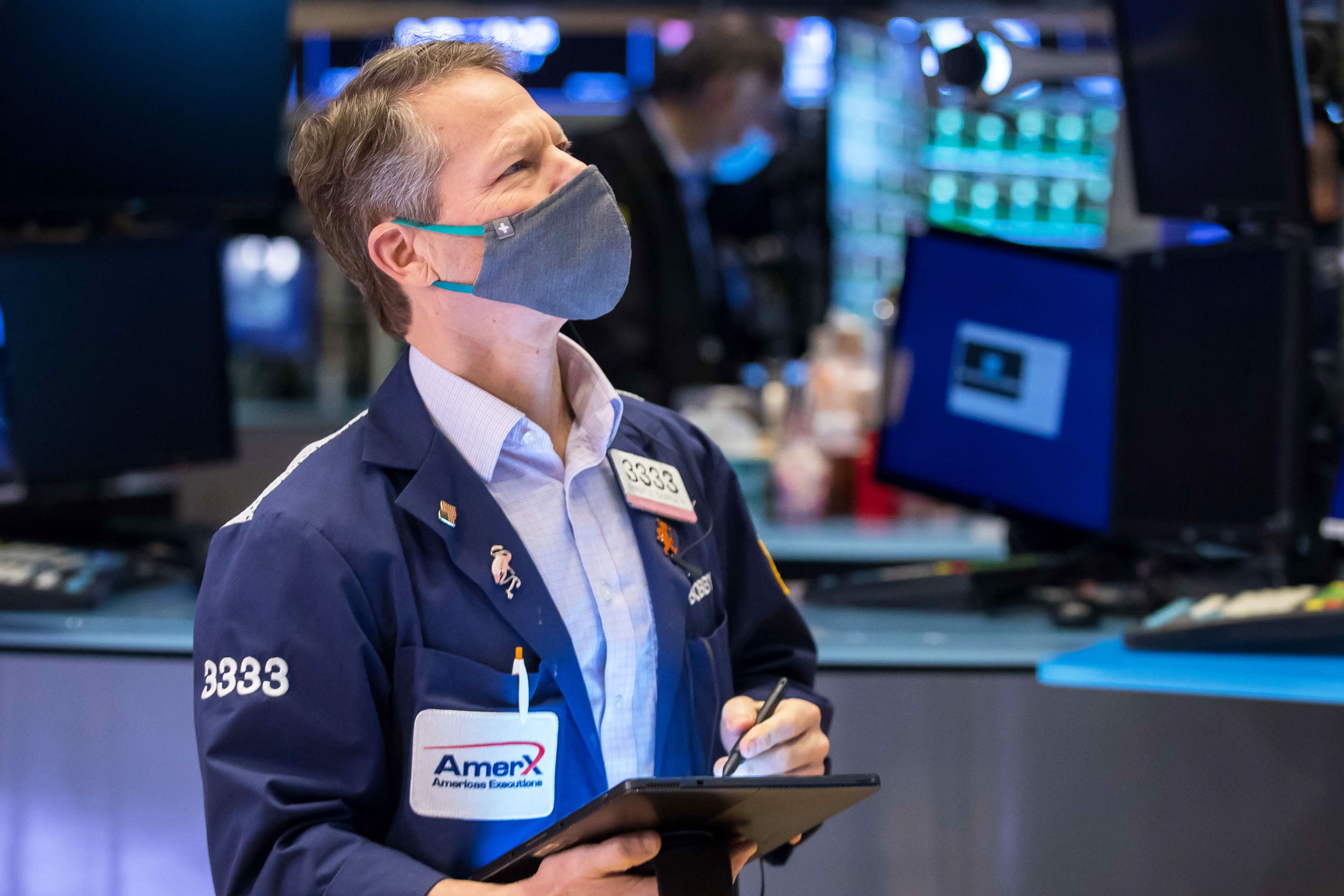Stocks open mixed with Nasdaq falling for a second day, but the Dow is higher

U.S. stocks struggled for direction during morning trading Tuesday as the market awaits key inflation data later this week.
The Dow Jones Industrial Average gained 74 points, or about 0.2%. The S&P 500 dipped 0.1%, while the Nasdaq Composite was down less than 0.1%.
Corporate earnings were driving stocks moves on Tuesday. Harley-Davidson jumped 8% after the company reported a surprise profit for the fourth quarter. Pfizer shares tumbled 3.6% after the drugmaker’s fourth-quarter revenue came in lower than Wall Street analysts expected. Pfizer’s full-year earnings guidance also disappointed.
As of Tuesday morning, about 300 S&P 500 components have reported, with 77% exceeding earnings estimates and 75% topping revenue expectations, according to FactSet. However, the strong results have not been enough to dig the market out of the hole created by January’s slide, and weak forward guidance may be part of what is holding back a rebound.
“Despite a solid beat this quarter, guidance weakened significantly. … Guidance is also sparser than usual – we note only 76 instances of EPS guidance issuance in [January], slightly below last Jan and the lowest of any Jan,” Bank of America’s Savita Subramanian said in a note to clients.
Elsewhere, Peloton shares rose 2% after the interactive fitness company said it will slash 2,800 jobs in a restructuring effort that will see CEO John Foley step down and transition to executive chair.
The company will report earnings Tuesday after the market closes and during what’s been a turbulent time for the company. The stock surged 20.9% on Monday following reports the company could be a takeover target.
Shares of Snap fell 4.7% after the social media company announced a new debt offering.
Wall Street is on edge watching how the Federal Reserve will react to the intensifying price pressures. Bank of America on Monday reiterated its call for the Fed to hike rates 1.75 percentage points, or seven times, this year in an effort to head off inflation pressures which have been accelerated by rising rages.
Treasury yields hit fresh pandemic-era highs Monday and rose again Tuesday. The benchmark 10-year Treasury note most recently yielded 1.96%, a level not seen since November 2019.
On Thursday the Labor Department will release January’s consumer price index data. The reading follows a stronger-than-expected January jobs report, which has led to speculation that the Federal Reserve could be more aggressive when it comes to hiking rates. The inflation data is expected to show that prices rose 0.4% in January, for a 7.2% gain from one year ago, which would be the highest in almost 40 years.
“The tumultuous market action continues as the combination of Fed policy uncertainty and economic transition remains in focus,” Canaccord Genuity said Monday in a note to clients.
“Unfortunately, this is the environment we are going to be in for a while as the monetary and economic mid-cycle transition unfolds.”
On the economic data front, the Census Bureau said Tuesday that December’s trade balance was a deficit of $80.7 billion. Economists surveyed by Dow Jones survey were expecting a shortfall of $82.8 billion shortfall.
During trading on Monday the S&P 500 slid 0.37%, while the Nasdaq Composite shed 0.58%. Both traded higher earlier in the day, before reversing course during the final hour of trading. Each index managed to close above its worst level of the session, however.
The Dow Jones Industrial finished Monday’s trading session just 1 point higher. At one point the 30-stock benchmark had added 235 points. At the lows of the day, the Dow declined by about 95 points.
“U.S. stocks will struggle for direction until the latest inflation tilts market’s expectations as to how aggressive the Fed will tighten into what is still deemed as an overvalued stock market,” said Oanda’s Edward Moya.




